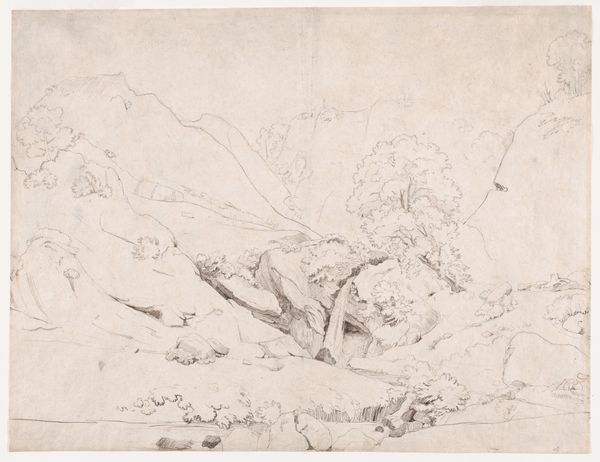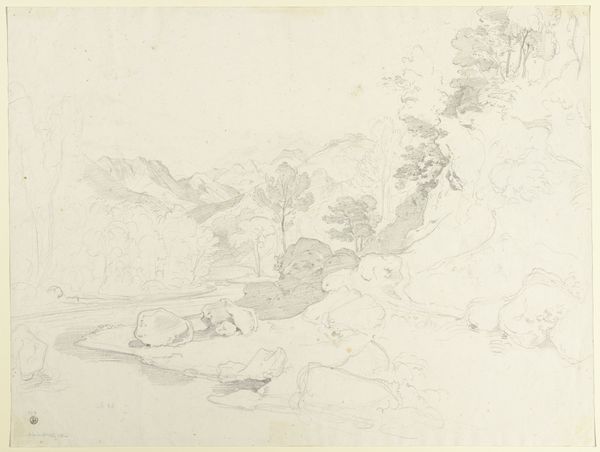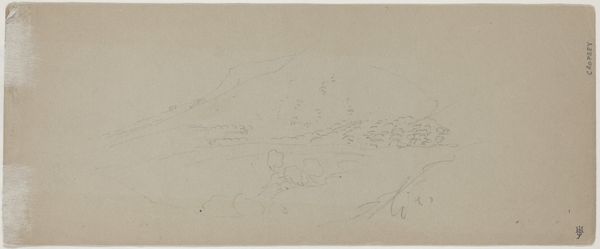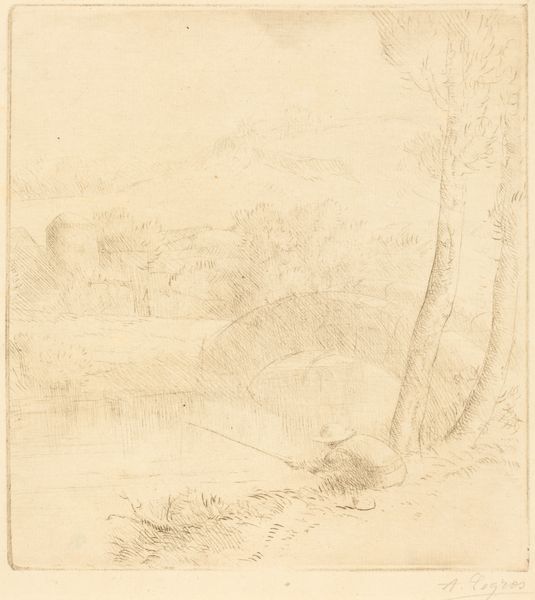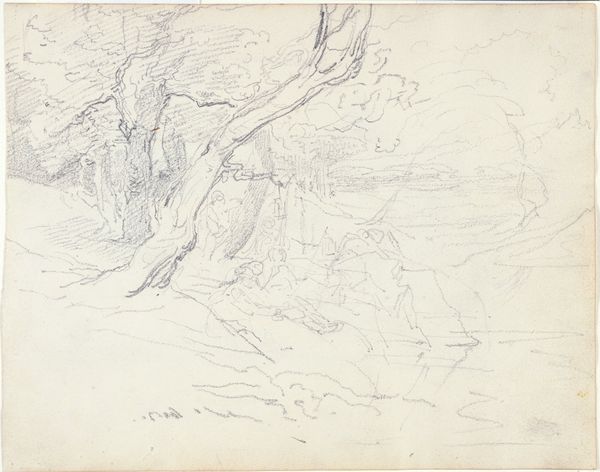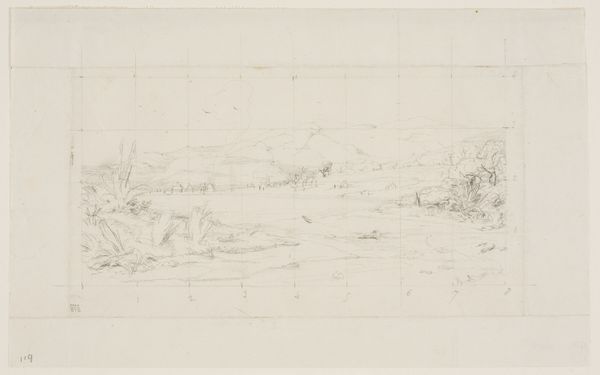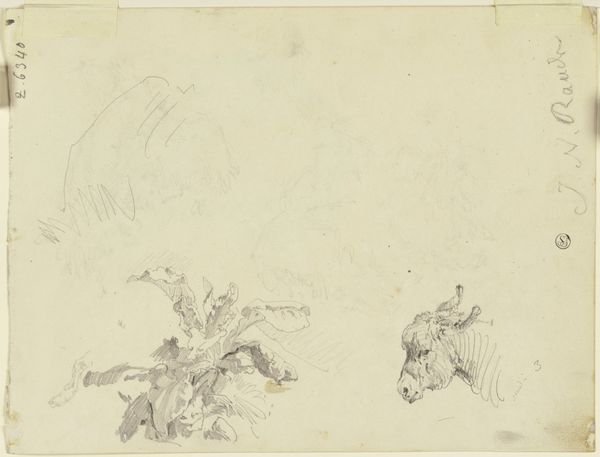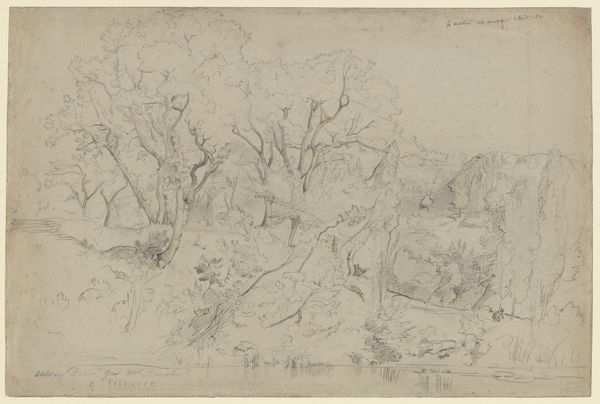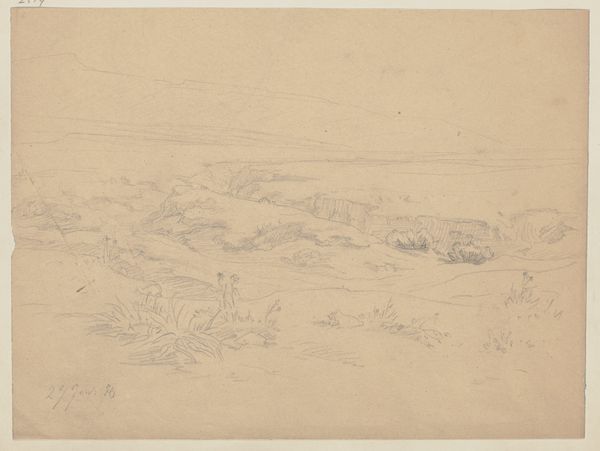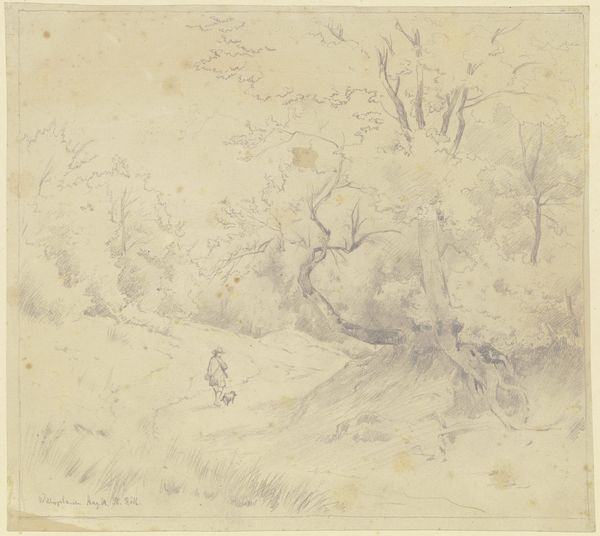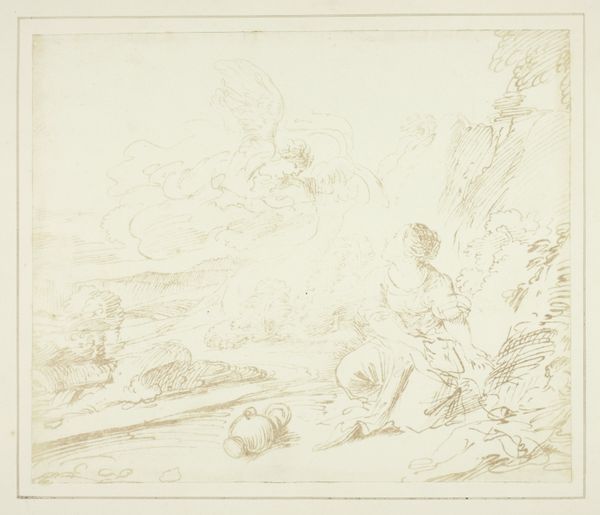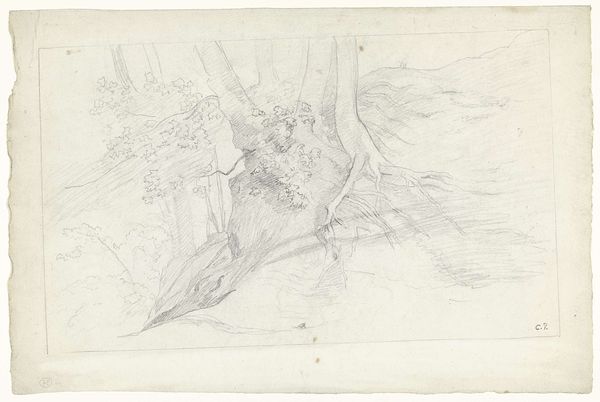
drawing, pencil
#
drawing
#
landscape
#
figuration
#
romanticism
#
pencil
#
history-painting
Dimensions: height 375 mm, width 485 mm
Copyright: Rijks Museum: Open Domain
Editor: Here we have "Watersnood van 1809," created in that very year by Cornelis van Hardenbergh. It’s a pencil drawing. My first thought is that it looks… chaotic, almost ghostly in its starkness. What’s your read on this, especially given the historical context? Curator: Chaotic is spot on. A disaster immortalized, but without the theatrics of, say, a Delacroix. Hardenbergh captures the raw terror of a flood – figures tossed about, lines blurred as if viewed through rain-streaked eyes. You almost feel the chill and dampness radiating from the paper itself. Editor: It’s interesting that you mention the lack of theatrics. With "Romanticism" tagged as the style, I’d expect more drama. Curator: Ah, but Romanticism isn’t just about grand gestures! It’s also about individual experience, the power of nature, and the sublime – that feeling of awe mixed with terror. Hardenbergh delivers the sublime, albeit in a subtle way. Think of it as a whispered scream rather than a shouted one. See how the figures are small in relation to the wash of water? It’s less about them and more about the overpowering force. Does that change your perception? Editor: Definitely! It makes it feel more… personal, even though it depicts a public tragedy. I guess I was expecting more emphasis on heroism. Curator: And that's precisely what makes it such a compelling piece! Instead of celebrating heroes, it exposes vulnerability. Think about how pencil, a humble medium, serves to underscore that sense of fragility. What will you take away from this piece? Editor: I think I'll appreciate Romanticism's quiet moments and power and subtlety. Curator: Lovely thought. I’m taking with me a renewed respect for pencil’s potent voice. A simple tool that evokes powerful emotions.
Comments
No comments
Be the first to comment and join the conversation on the ultimate creative platform.
